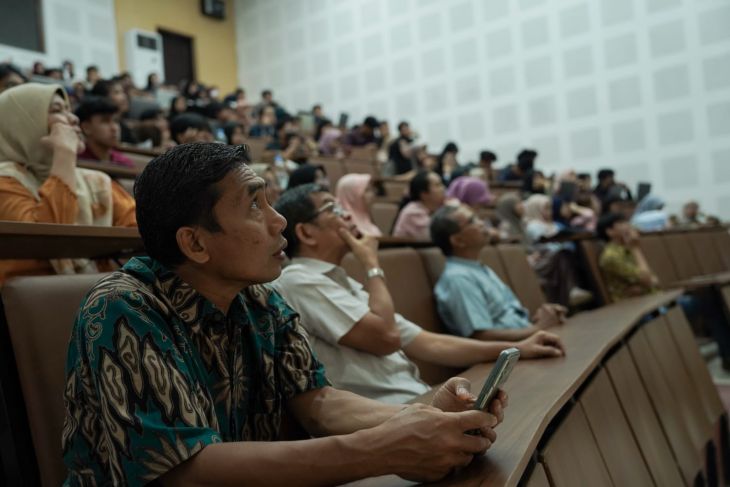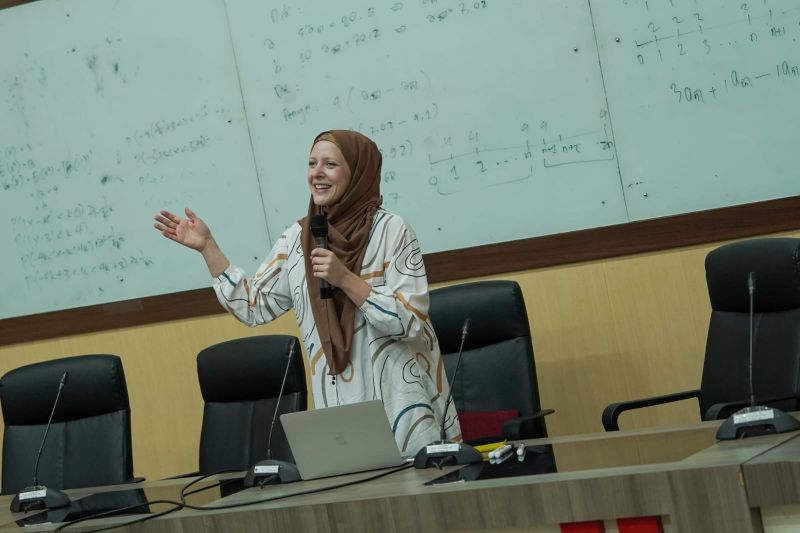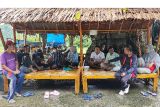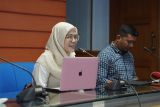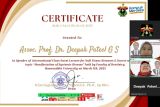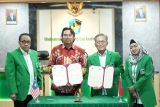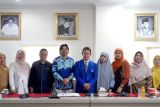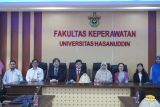Makassar (ANTARA) - The Faculty of Mathematics and Natural Sciences (FMIPA), Hasanuddin University (UNHAS), held a guest lecture on Paleoclimatology using stalagmites from Bantimurung Caves.
This guest lecture was delivered by Dr. Alena K. Kimbrough, paleoclimatologist at the School of Earth, Atmospheric and Life Sciences (SEALS), University of Wollongong, Australia, on Tuesday, October 3rd, 2023.
Dr. Alena explained how the atmospheric conditions above South Sulawesi are very complex, one of which is influenced by the Asian monsoon, which contributes to around 80% of the rainfall in South Sulawesi. To prepare for the future climate, it is essential to know how these Asian monsoons have behaved in the past.
One way to find out about this is to use stalagmites in caves, which is a proxy for knowing the conditions of climate variables in the past.
Dr. Alena K. Kimbrough uncovered variations in rainfall up to 310,000 years ago, which were stored in Stalagmites in Bantimurung Cave, South Sulawesi, by extracting information on Oxygen Isotopes.
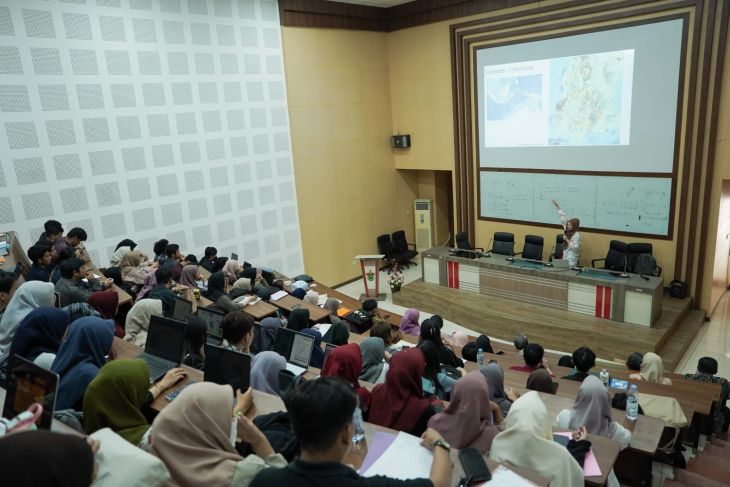
Andika, one of the lecturers at the Hydrometeorology Laboratory - Department of Geophysics, said that this guest lecture was fundamental, especially for us at UNHAS, which is located very close to Bantimurung.
Paleoclimate data obtained in Bantimurung can be confirmed and used as a comparison with other stalagmite data taken in China and Flores.
This guest lecture was very impressive for students, particularly for Geophysics students in Hydrometeorology studies.
"We gained new knowledge. It turns out that stalagmites can store climate information in each layer so that we can learn how the earth experienced changes due to periods of extreme cold and heat in the past (glacial-interglacial cycles)," said Elsa, a Geophysics student in the Class of 2021.
